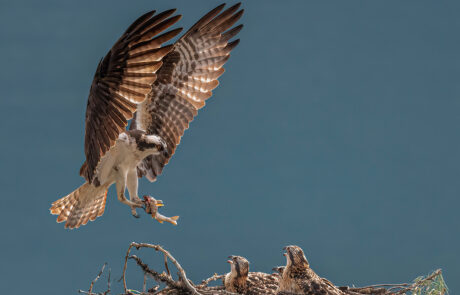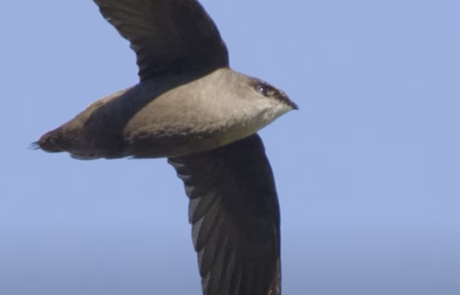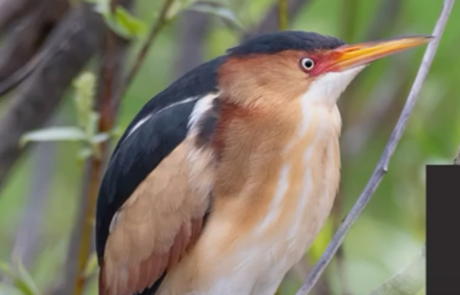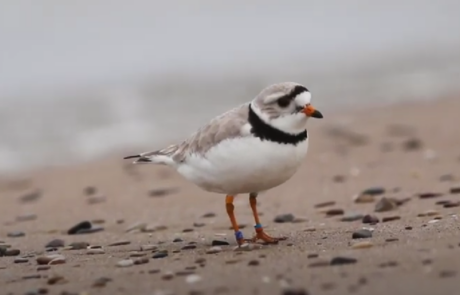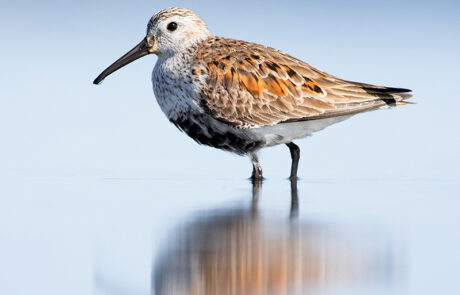An Introduction to Bird Colours
Colour is a great tool, but if you rely on it too much you might miss out on other key features when trying to identify a bird. Start with size, shape, and context clues before focusing on colour.
In the below images you’ll see that these birds are boldly black and white, but colour won’t be enough to help you find these birds in a guide book or if describing them to another person.
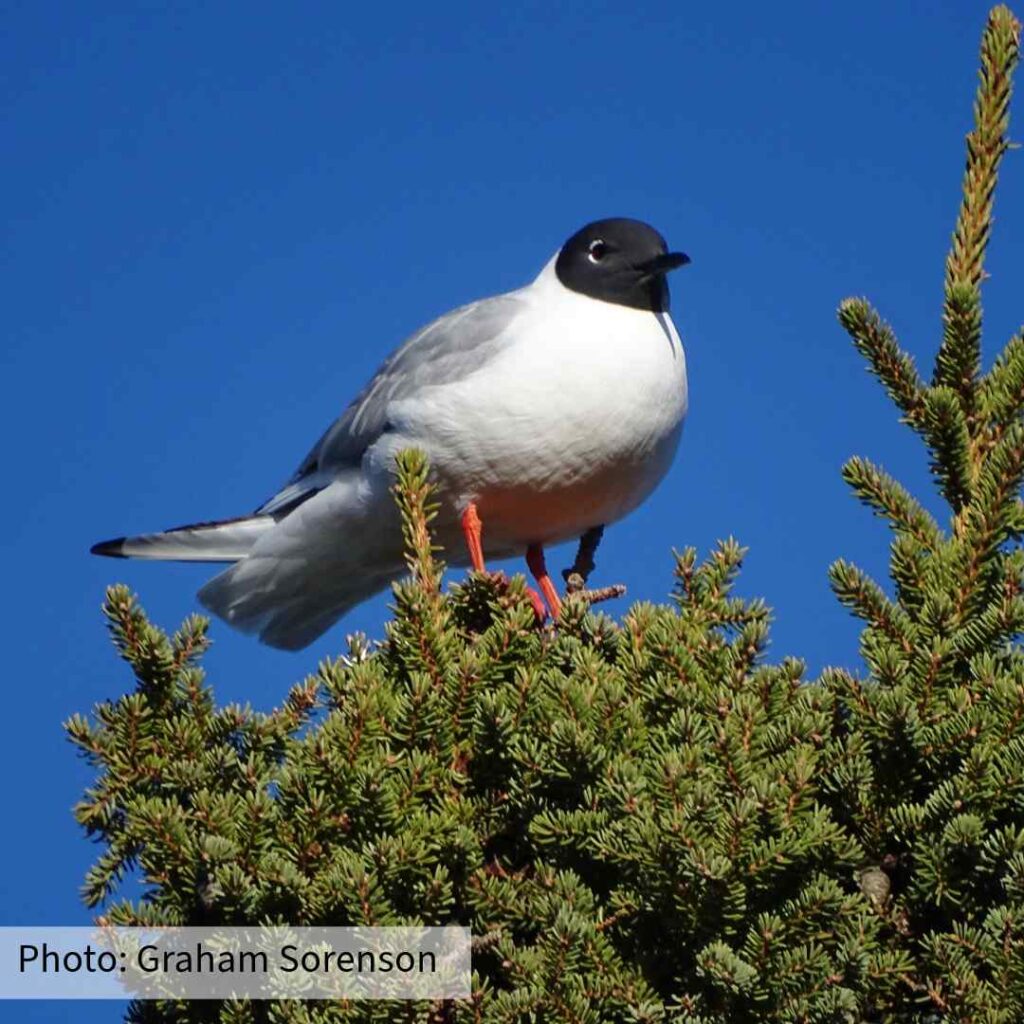
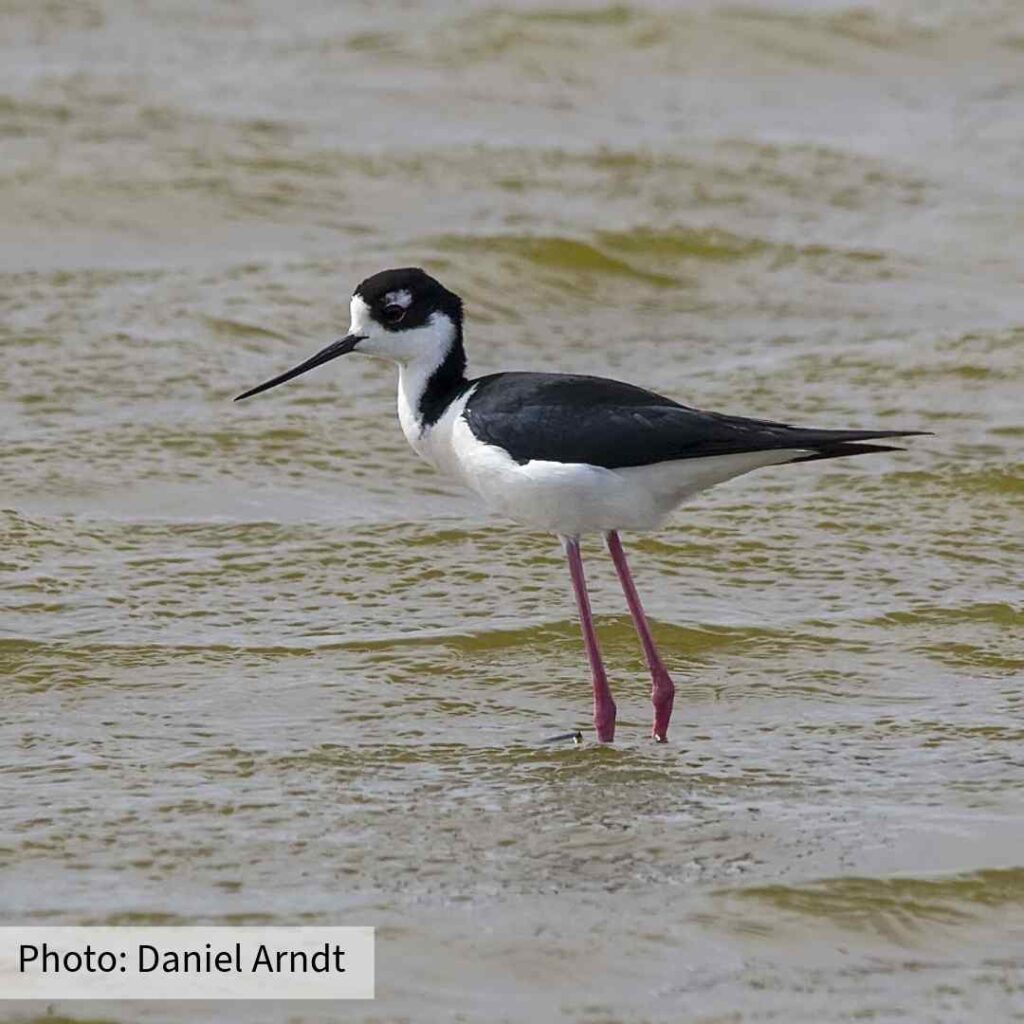
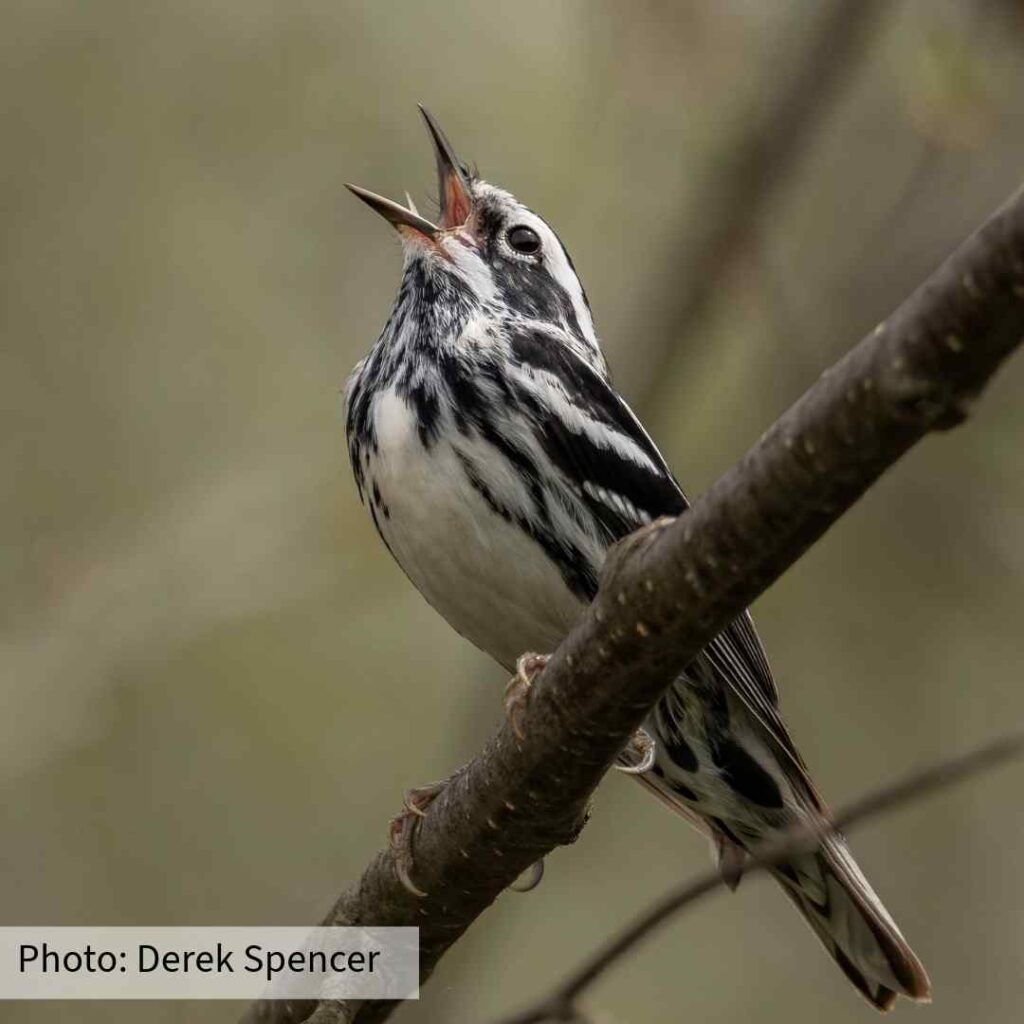
Colour can vary a lot! Some species will have different coloured plumage as they age, or throughout the seasons as they moult feathers. The males and females of some species may also look dramatically different if focusing solely on colour. And finally, colour can sometimes be hard to see. If the sun is behind a bird, it may appear much darker than it actually is.
We always recommend combining colour with the other identification tools you’ve already learned in this course.
Moult
Moulting is when birds shed their old feathers to make way for new ones. Moulting helps birds get rid of old or damaged feathers, so that they’ve always got feathers that are in good condition. Moulting can take a lot of energy, so birds will often molt when they’re not busy with breeding or migrating. Some species may molt several times per year, while others may only molt once.
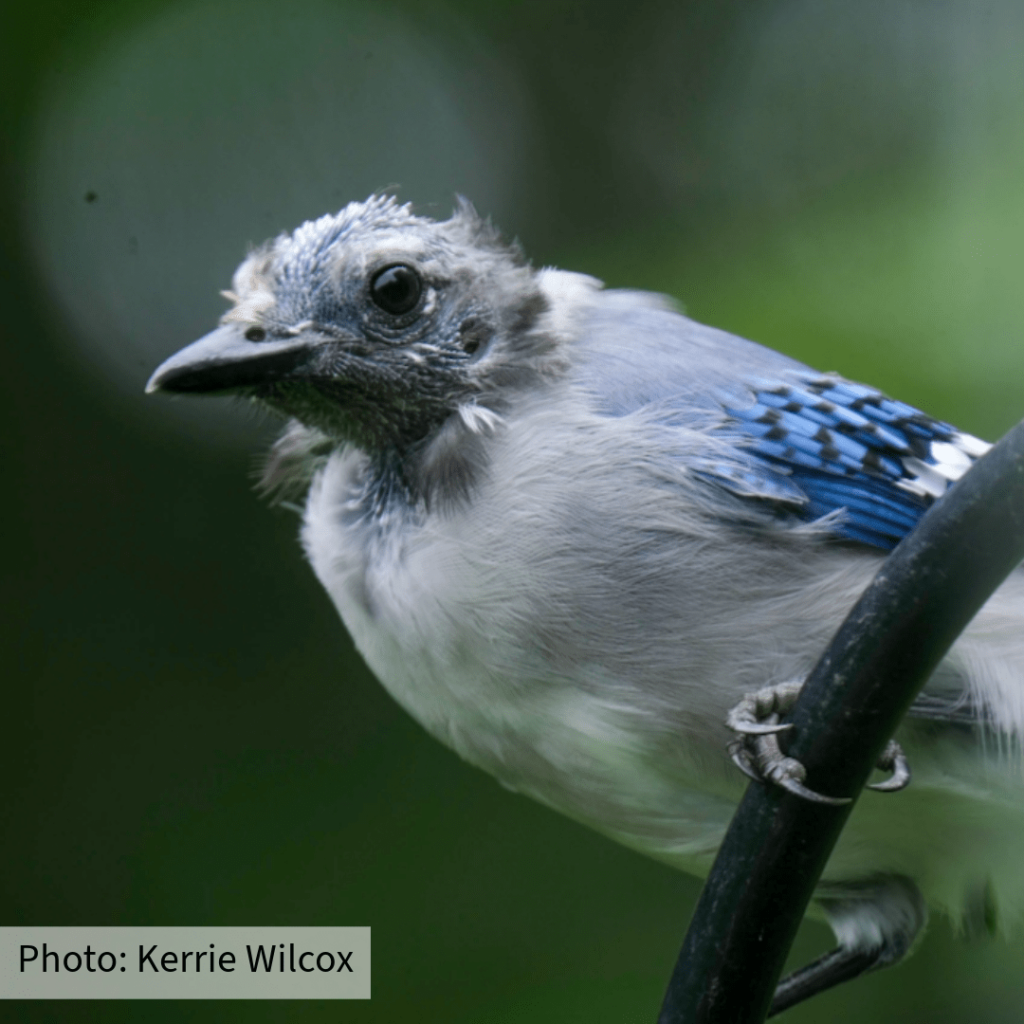
For some species, moulting will help them transition between their non-breeding and breeding plumage which can be seen in the Snow Bunting images below. Snow Buntings nest in the high Arctic in the summertime, and when they finish breeding, they migrate south to the more densely populated regions in Canada. Unless you live in the very far north, you’re most likely to see Snow Buntings in their non-breeding plumage in the winter time.
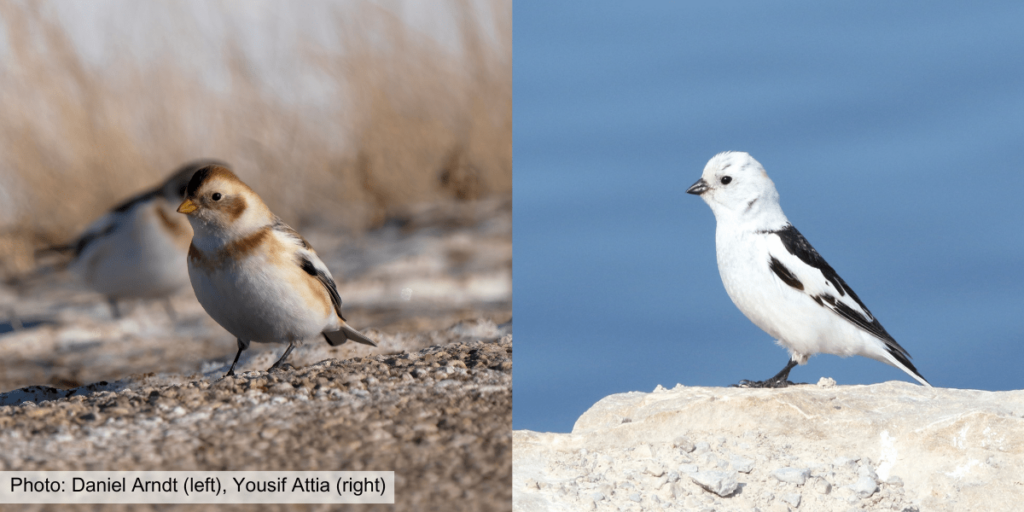
Age
Another major variation in colour within the same species could be the result of the age of the bird. Sometimes it’s very obvious when you’re looking at a chick. You’ll likely be able to tell by the size and shape, and from the way it interacts with the adult. However, once chicks move into their “awkward teenage” phase, they can be much trickier to identify. These birds are referred to as immature, which is a term that describes birds that have not reached sexual maturity yet. You may also hear the terms fledgling, for birds that have recently started to fly, or juvenile, for birds that are a little older than fledglings.
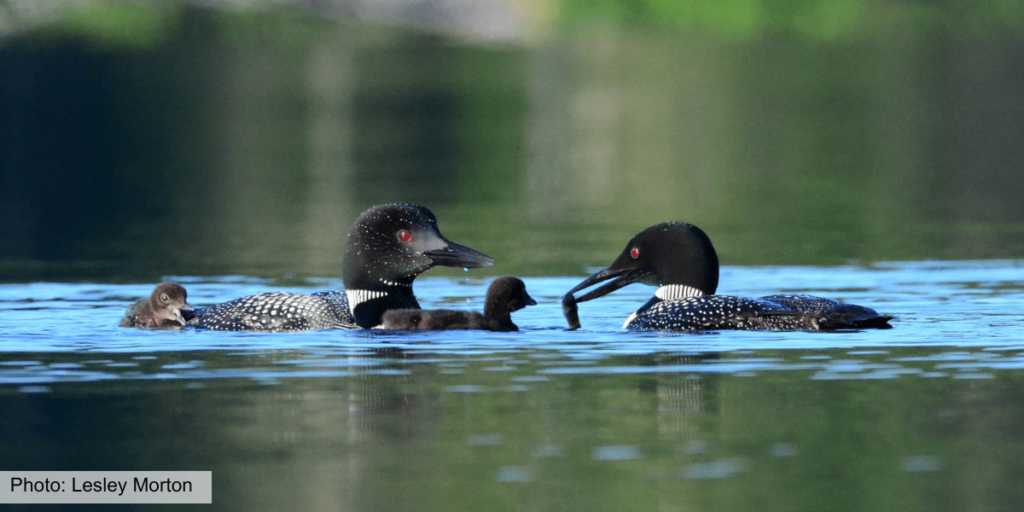
Juvenile birds are typically able to fly and are independent, and are often a similar size and shape as adults. They have not developed the bold colours that are typical of breeding adults because they haven’t reached that stage yet. They may be more streaky or spotted, or may have duller colours, sometimes resulting in them being mistaken for females. This immature stage can last for a single year or a few years, depending on the species.
When you’re just starting to identify birds, it’s really helpful to know about these life stages, but you don’t need to focus on them too much. If you see a bird that looks familiar, but isn’t quite what you expect, it could simply be an immature bird. You’ll be more likely to see these individuals later in the summer.
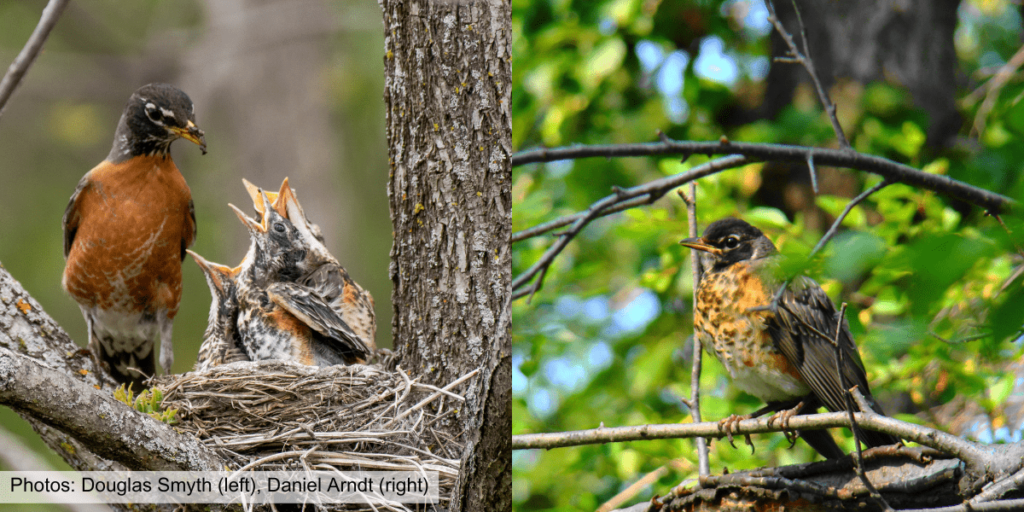
Gull species take 2-5 years to reach maturity. The next time you see a flock of gulls, try to spot the wide variety of colour patterns. These may all be part of the same species but could be different ages. You’ll have to look for additional clues to identify their species, such as the size and shape, markers on the bill, and you’ll want to also consider which gull species may live in your area.
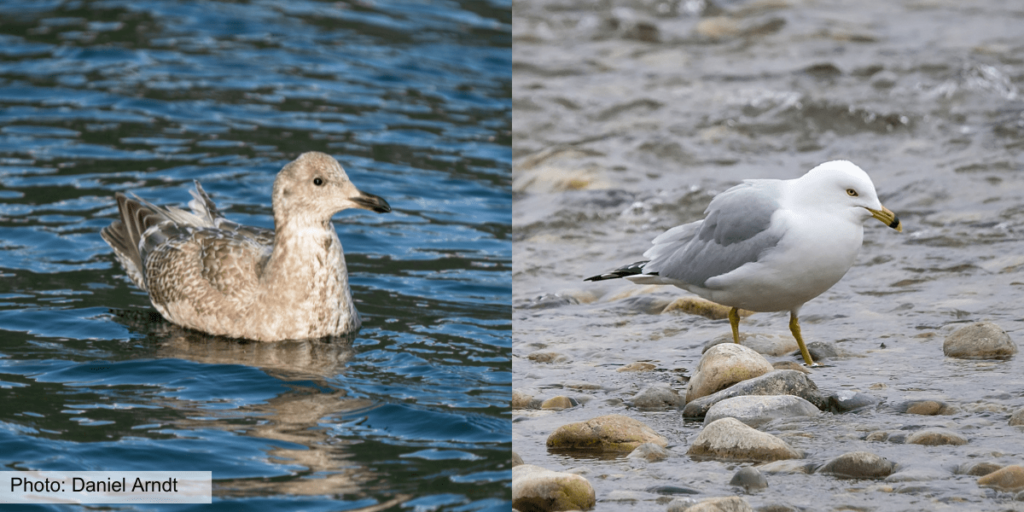
Sexual Dimorphism
A third factor that could make birds of the same species look different from each other is sexual dimorphism. In some species the male and female can look dramatically different. Male’s might have flashier plumage during the breeding season, size may vary between the sexes, and there may even be different features or shapes to consider.
On the flip side, some bird species will look the same regardless of sex, such as the Black-capped Chickadee, Mourning Dove, or House Wren.
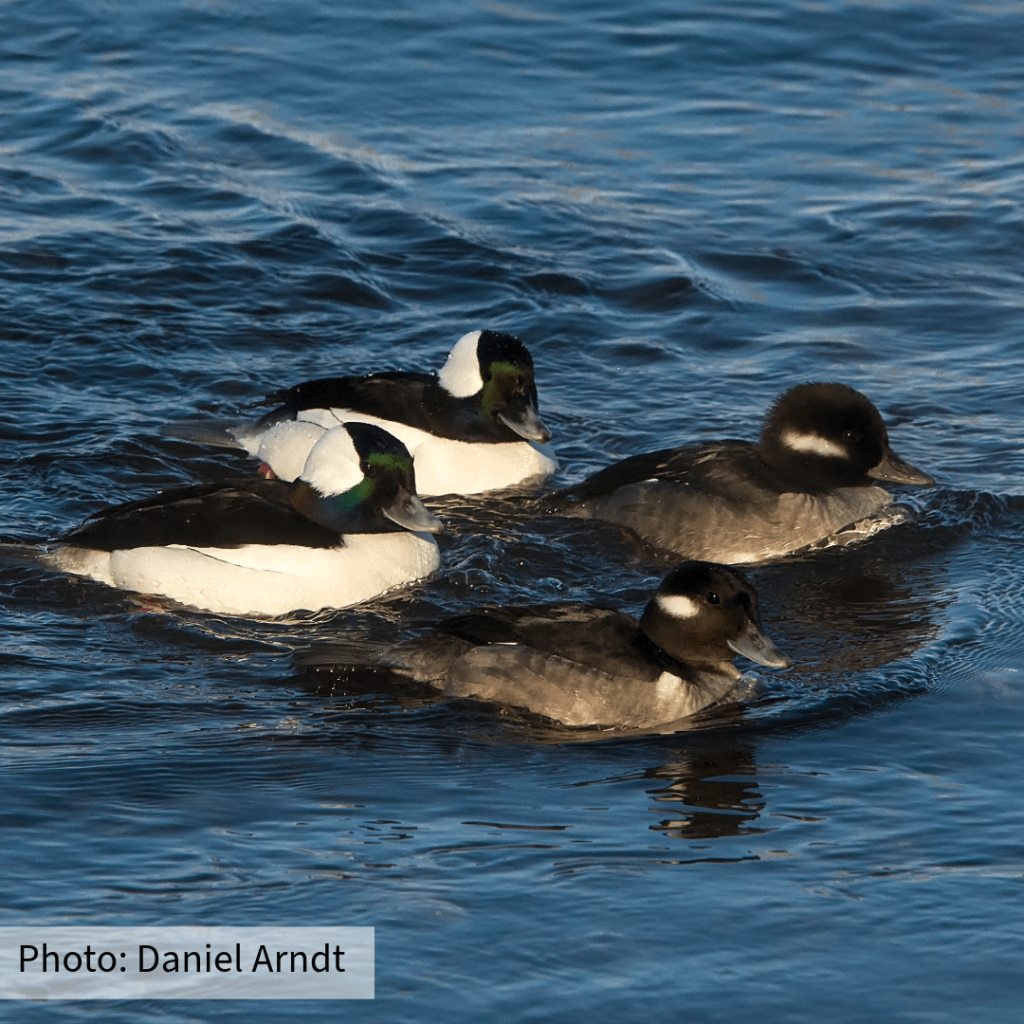
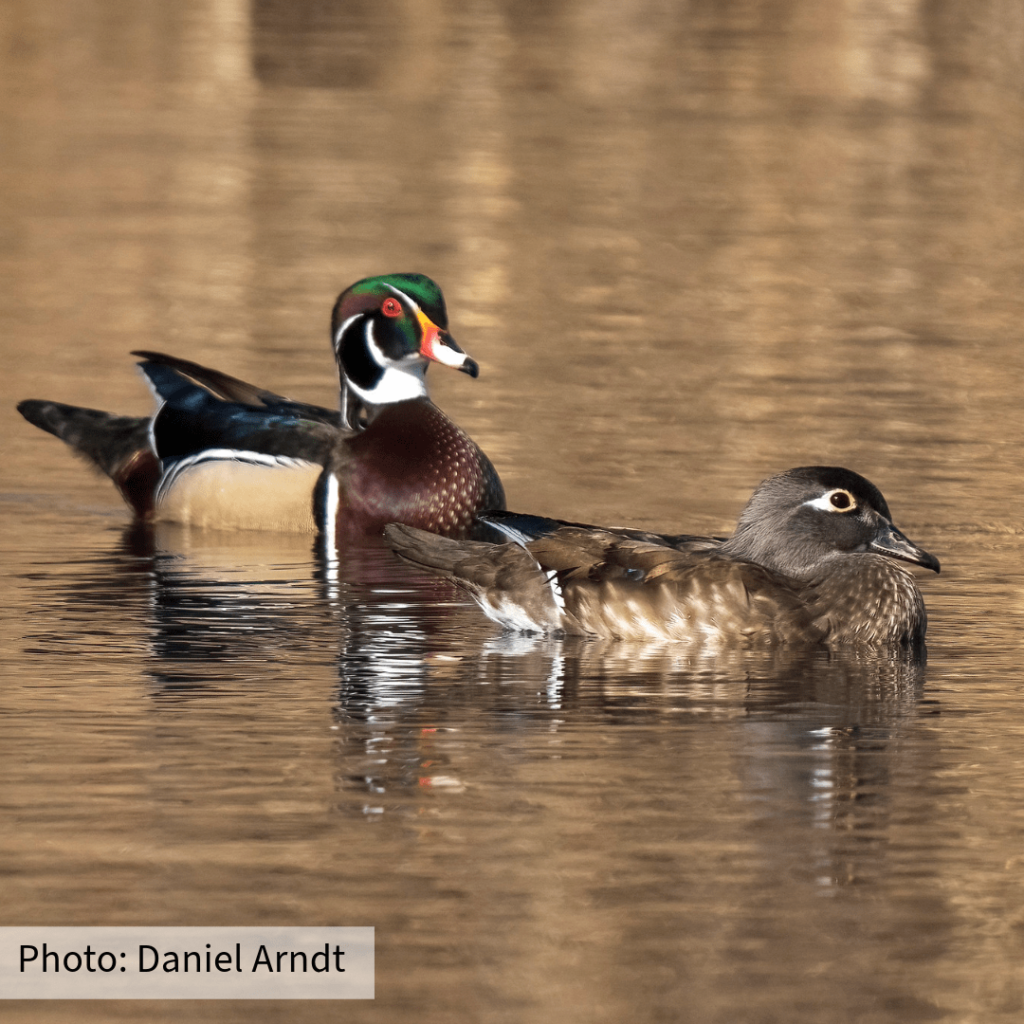
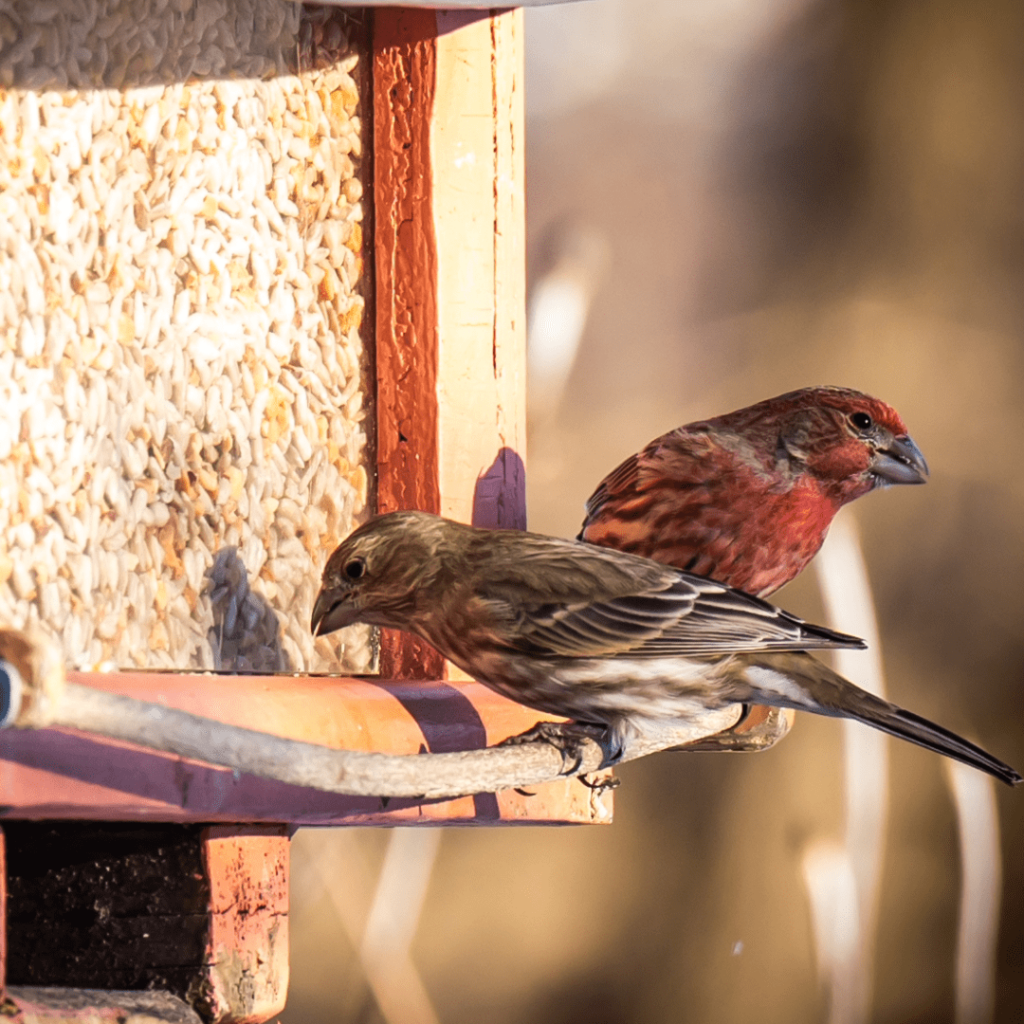
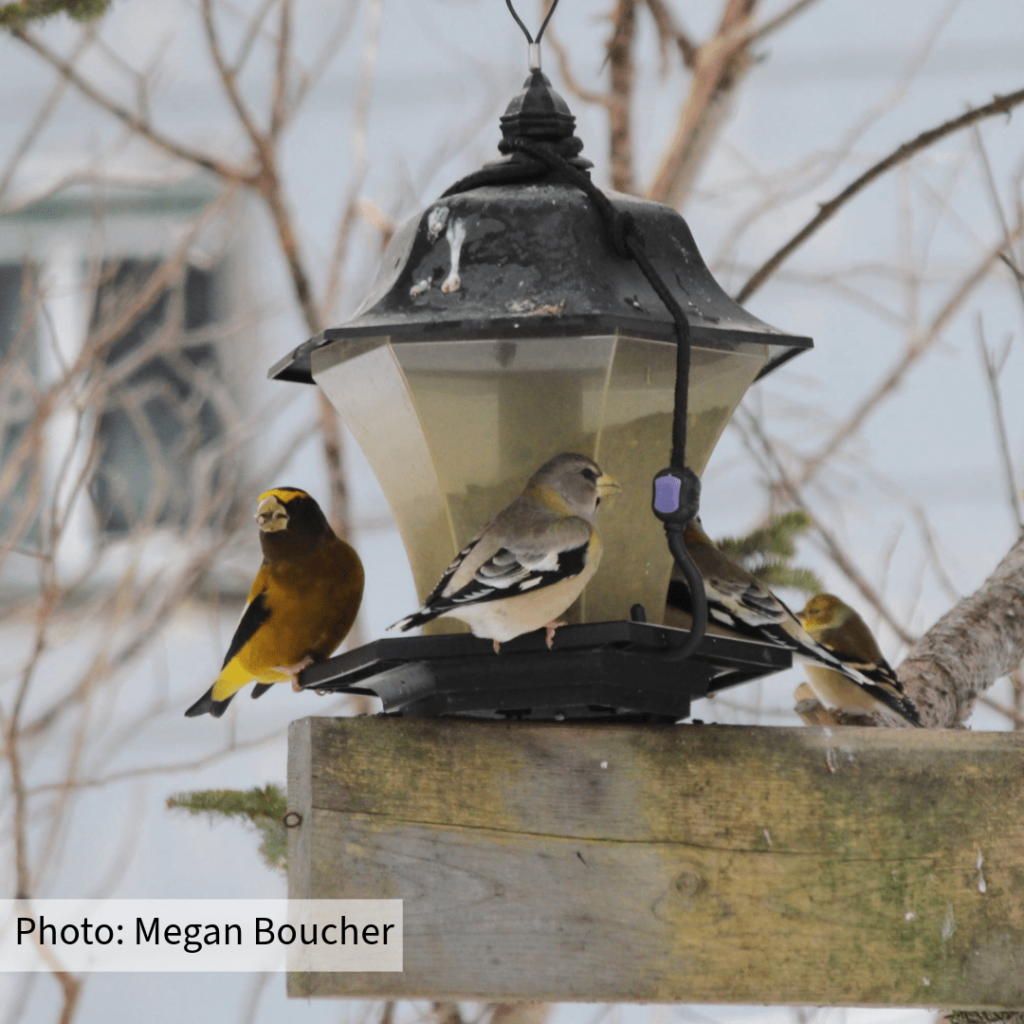
As you’ll see above, a wetland is a great place to start looking for sexual dimorphism as many waterfowl species exhibit this trait. You will also notice this at your bird feeders with species like the Pine Grosbeak, Northern Cardinal, House Sparrow, American Goldfinch, or Baltimore Oriole – to name a few.

